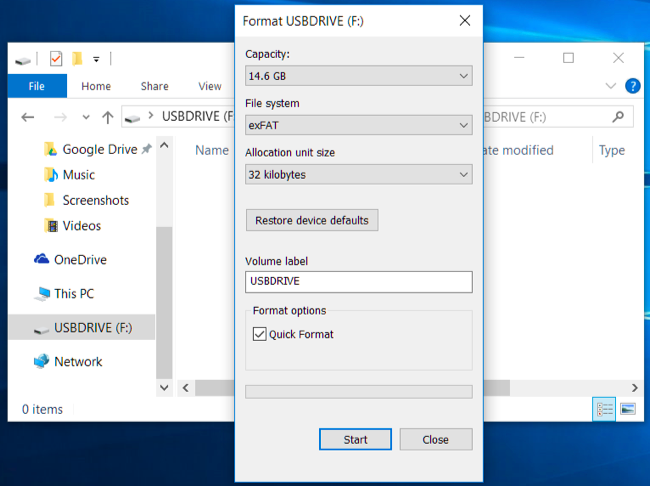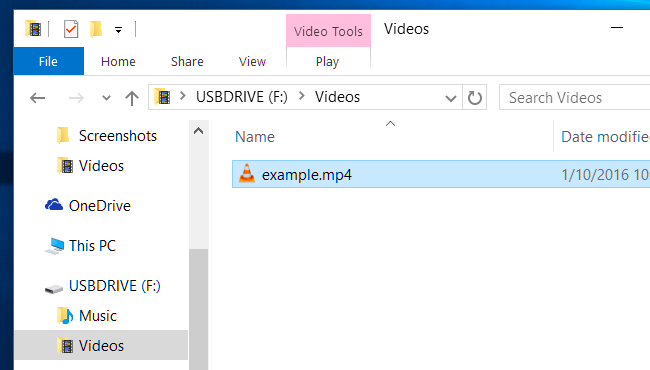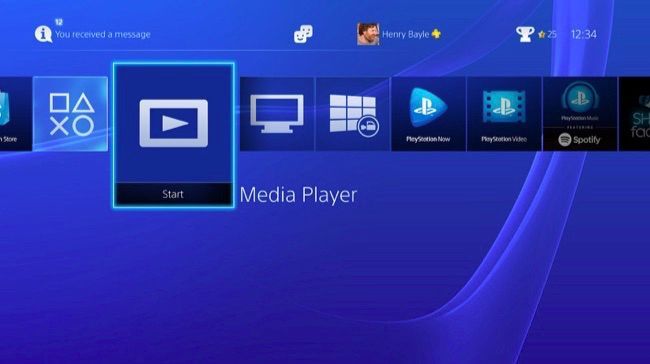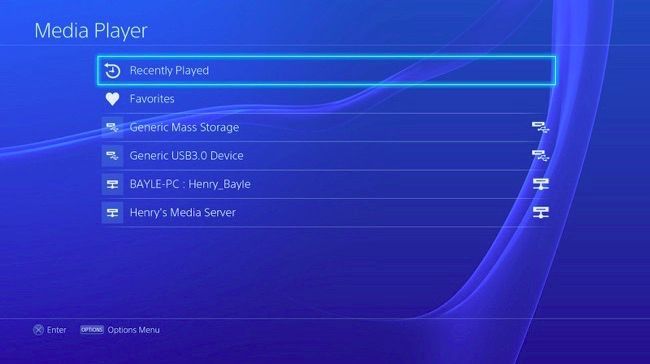Quick Links
Like the Roku and Chromecast, Sony's PlayStation 4 can play video and music files from a USB drive or another computer on your network. Your PS4 can even play local music files in the background while you play a game.
This is thanks to the "Media Player" app, which Sony added more than a year and a half after the PS4 was released. There's also a now-free-to-use Plex app for streaming videos from another one of your PCs.
Supported File Types and Codecs
Here's a list of different video and audio codecs the PlayStation's Media Player understands, straight from Sony. If you want to play a media file on your PlayStation, it must be in these file formats. If it isn't, you'll need to transcode it to a supported one before it will function on your PlayStation.
Music files can be in MP3 or AAC (M4A) formats. Photos can be in JPEG, BMP, or PNG formats. Video files must be in one of the following formats:
MKV
- Visual: H.264/MPEG-4 AVC High Profile Level4.2
- Audio: MP3, AAC LC, AC-3(Dolby Digital)
AVI
- Visual: MPEG4 ASP, H.264/MPEG-4 AVC High Profile Level4.2
- Audio: MP3, AAC LC, AC-3(Dolby Digital)
MP4
- Visual: H.264/MPEG-4 AVC High Profile Level 4.2
- Audio: AAC LC, AC-3 (Dolby Digital)
MPEG-2 TS
- Visual: H.264/MPEG-4 AVC High Profile Level4.2, MPEG2
- Audio: MP2(MPEG2 Audio Layer 2), AAC LC, AC-3(Dolby Digital)
- AVCHD: (.m2ts, .mts)
These are some of the most common video file types, so you may not need to worry about it at all.
Use the Correct File System on Your USB Drive
So you have the right files--now it's time to get them to your PlayStation. To get started, plug a USB drive into your computer. The drive must be formatted with either the exFAT or FAT32 file system, as the PlayStation 4 can't read NTFS. If your drive is formatted with the NTFS file system, you'll see an error after you connect it to the PlayStation 4. It just won't appear or be usable.
To double-check, right-click the drive in Windows and select "Format." Format it to use the exFAT file system if it's currently using NTFS. This will erase all files currently on the drive, so back up any files you care about before doing this.
You Must Place Your Media Files in Folders
Sony doesn't mention this anywhere, so we bumped into this problem ourselves. If you just have a video file and dump it into the "root" folder of your USB drive, the PlayStation 4 won't see it. Your files must be located inside a folder on the drive or your PS4 won't be able to use them.
Audio files must be located in a folder called "Music" on the drive for the PS4 to detect them correctly. Video files can be in any folder, but they need to be in a folder and not on the root of the drive. You could put them in a folder named "Videos", or create separate folders for different types of videos. LIkewise, photos must also be stored in folders if you want to view them, but any folder name will do.
Use the PS4 Media Player
Once you're done, you can "safely remove" the USB drive from your computer and plug it into one of the USB ports on your PS4 -- there are a few located on the front that are usually used for charging your controllers. Launch the PS4 Media Player app and your USB drive will appear as an option.
You'll see the PS4's "Media Player" app icon in the PS4's "content area" -- that strip of icons on the main screen. Select it with your controller and launch it. If you haven't installed the media player app yet, the icon will still appear here, but it'll take you to the PlayStation Store where you can download the app for free first.
Select your USB drive, browse to the music or videos you want to play, and use the buttons on the controller to control playback.
While playing a video, you can press the L2 and R2 shoulder buttons to rewind and fast forward. Press the "Options" button to open a playback control panel, and press the triangle button to view information about the file.
When playing music, you can hold down the PlayStation button while in a game to access the quick media player controls, allowing you to quickly skip songs and pause playback.
Alternatively: Use a DLNA or Plex Server
If you don't want to connect USB drives directly to your PS4 and ferry media files back and forth that way, you can stream videos and music from a DLNA server to your PlayStation 4. The PS4 Media Player app will detect compatible DLNA servers on your home network and offer them as options right alongside any connected USB devices when you open it
Use our guide to setting up a DLNA media server if you want to go this route. However, if you're looking at streaming over the network, Plex is a more full-featured solution you might want to look at. Plex recently became free-to-use without a "Plex Pass" subscription on the PlayStation 4.
The PlayStation 4 also offers apps for streaming from Netflix, Hulu, YouTube, Amazon, and other services, but sometimes you just need to play back some local media files. It took Sony over a year and a half to add this option, but it's here now, so enjoy taking advantage of it.
Image Credit: Leon Terra on Flickr, PlayStation Europe on Flickr, PlayStation Europe on Flickr





